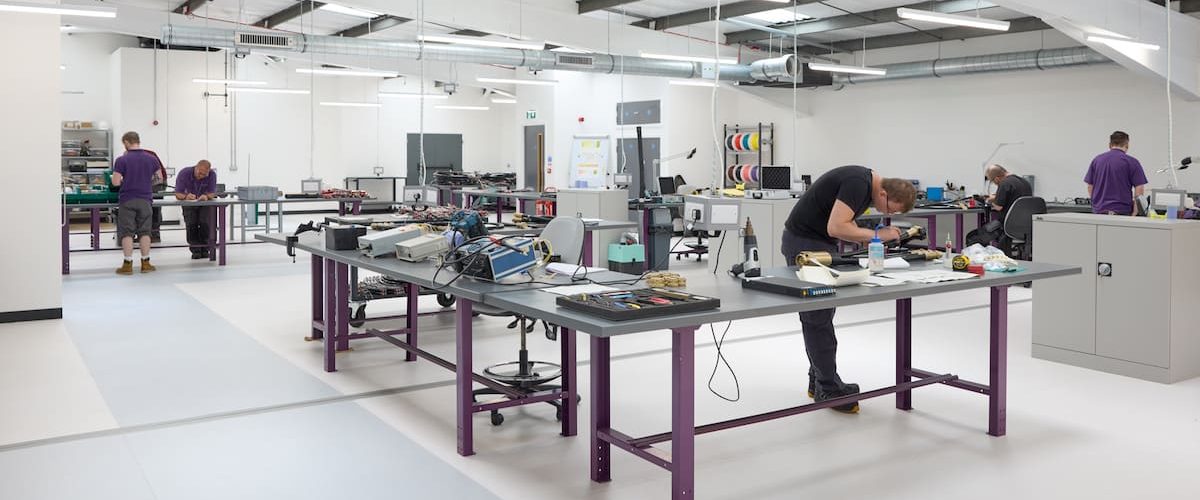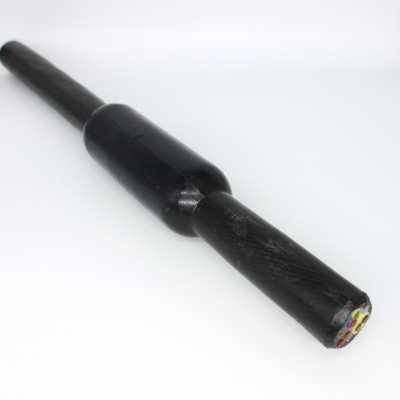Thermoplastic Splicing

What is Splicing?

The concept of cable splicing involves the joining of electrical or optical cable conductors to create uninterrupted transmission of signal – which can be used in a variety of situations where two or more cables need to be joined. To achieve a splice, surfaces are prepared, connected, insulated and protected. Splices can be arranged in various physical configurations to suit their application, with certain splicing techniques lending themselves to particular configurations.
When Would You Need a Cable Splice?
Cable splices have a variety of uses and purposes, including:
- Lengthening – to connect cable sections
- Combining – to add components to a system
- Splitting – to create ‘Y’ or more breakouts
- Repair and replacement – to replace sections of cable or components within existing infrastructure
- Water blocking – to create an impermeable barrier that protects the wider system from water damage
What is Thermoplastic Moulding?
To ensure splice integrity is maintained over its design life, materials and processes used to create your splice must be carefully selected to withstand the environmental challenges it will face.
Thermoplastic moulding is the process of connecting and positioning cables to be spliced within a mould inside a sealed oven into which plastic granules are injected and melted. The splice becomes completely encapsulated in molten plastic, which takes the shape of the mould. The splice is ready for use as soon as the plastic cools below its melting point, although an ambient temperature is normally favoured.
What are The Benefits of Thermoplastic Splices?
There are extensive benefits which come with opting for thermoplastic splices over other splicing technologies:
Impermeability
For many platforms, the most fundamental feature of a splice is that it is impermeable to water and other contaminants that could damage the connection within the splice. SMI’s splicing technology is focused on encapsulating the splice with thermoplastic that has been amalgamated at an atomic level with the underlying splice materials, including the cable jacket. A thermoplastic splice will remain sealed for at least the life of the cable and potentially longer, as the environmental resistance of the material encapsulating the splice is greater than that of the jacket alone.
The Manufacturing Process
The manufacturing objective of thermoplastic splicing is to consistently create perfect bonding of materials. Given the inherent challenges of working with thermoplastic polyethylene (PE), it is absolutely vital that everything affecting the amalgamation process, including materials, placement, pressure, heat and environmental conditions are taken account of. SMI maintains complete control over the bonding process through its understanding of the foundational science and its investment in bespoke equipment to provide control over all relevant factors.
SMI has developed a sealed moulding unit to ensure that the pressure and temperature applied during the splicing process are precisely controlled to neutralise the effects of ambient conditions. This guarantees consistency in moulding outcome and total confidence in the quality of the resulting splice. As well as a factory-based moulding unit, SMI has developed a portable model that delivers the same features to enable splicing to be carried out on the platform to the same specifications.
Rapid Splicing
Thermoplastic moulding can deliver rapid splicing, as splices can be immersed in sea water and operating within minutes of being removed from its mould or heat box. This contrasts with thermoset plastic splicing, which requires a curing period of up to 16 hours to harden and be ready for use.
Are Thermoplastic Splices Suitable For Hostile Environments?
When considering the most hostile of environments such as platforms operating immersed in sea water and at high-altitude, it’s important to choose the most suitable splicing technology for hostile environments. Subtle differences in materials and processes can lead to significant variations in outcome quality.
While both thermoplastic moulding and heat shrink wrapped splices are often used on platforms operating in hostile environments, SMI maintains that the former provides a far more reliable splice. Heat shrink wrapped splices, while simpler to deliver and at an initially lower cost, do not provide the same through life impermeability and are more prone to unexpected failures. To support through life, reliable performance of systems integrated onto high capital investment platforms, as well as to reduce ongoing costs associated with maintenance and repair, thermoplastic moulded splices are the clear leader.
